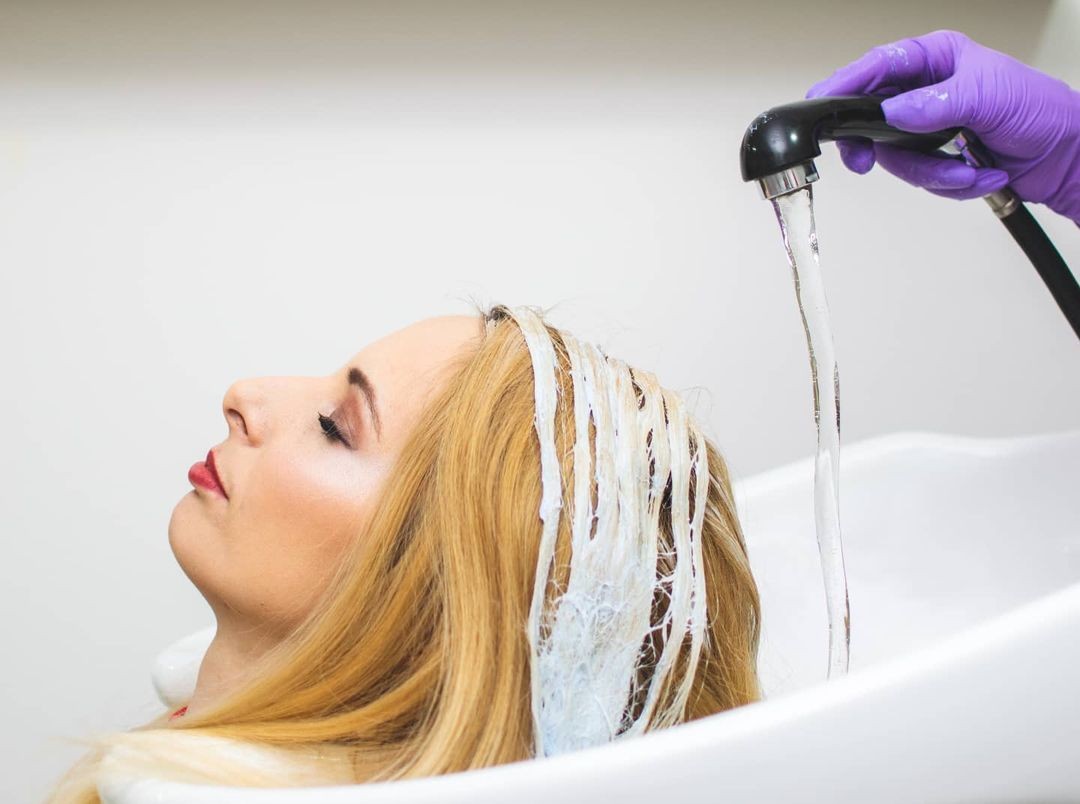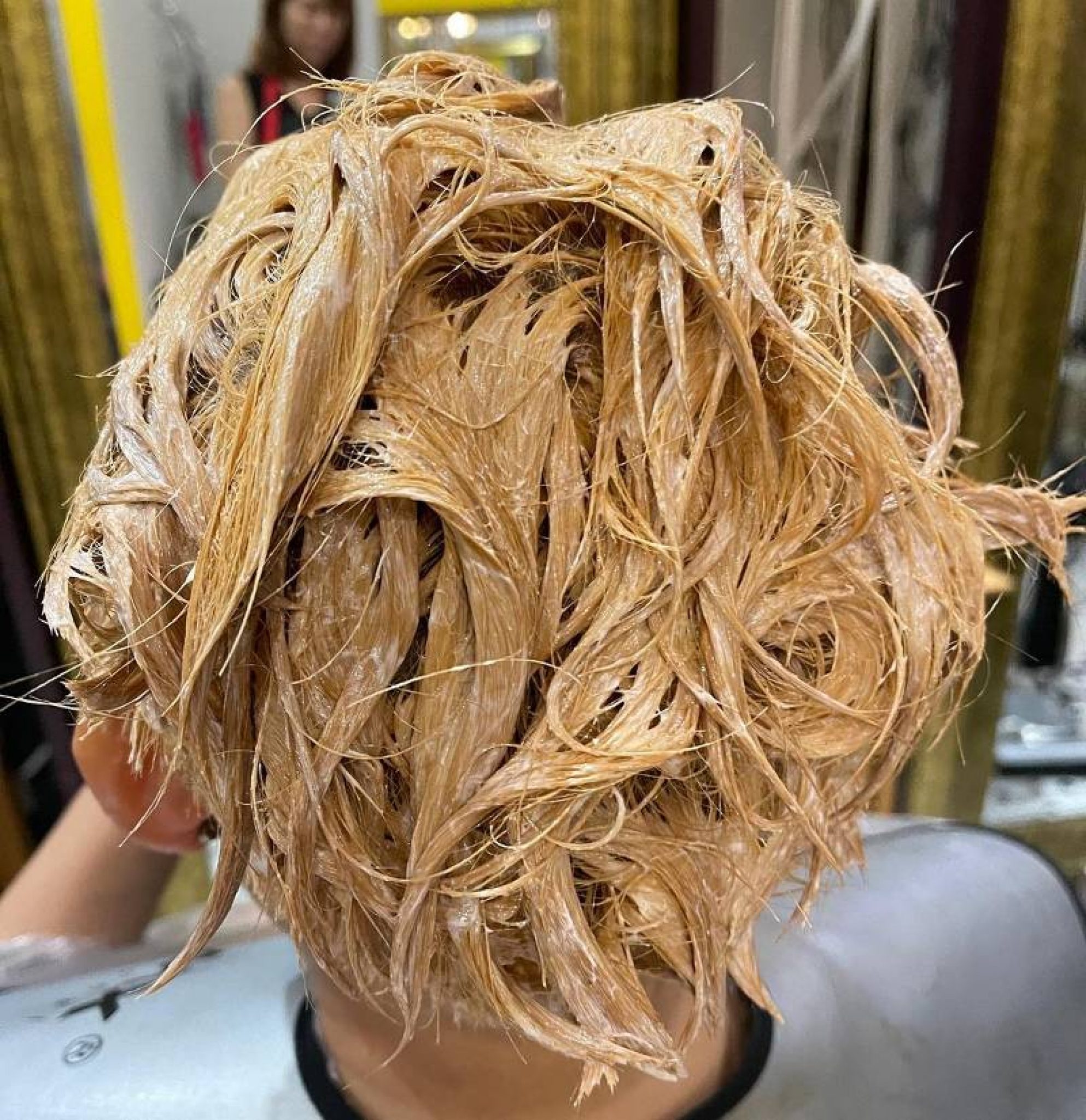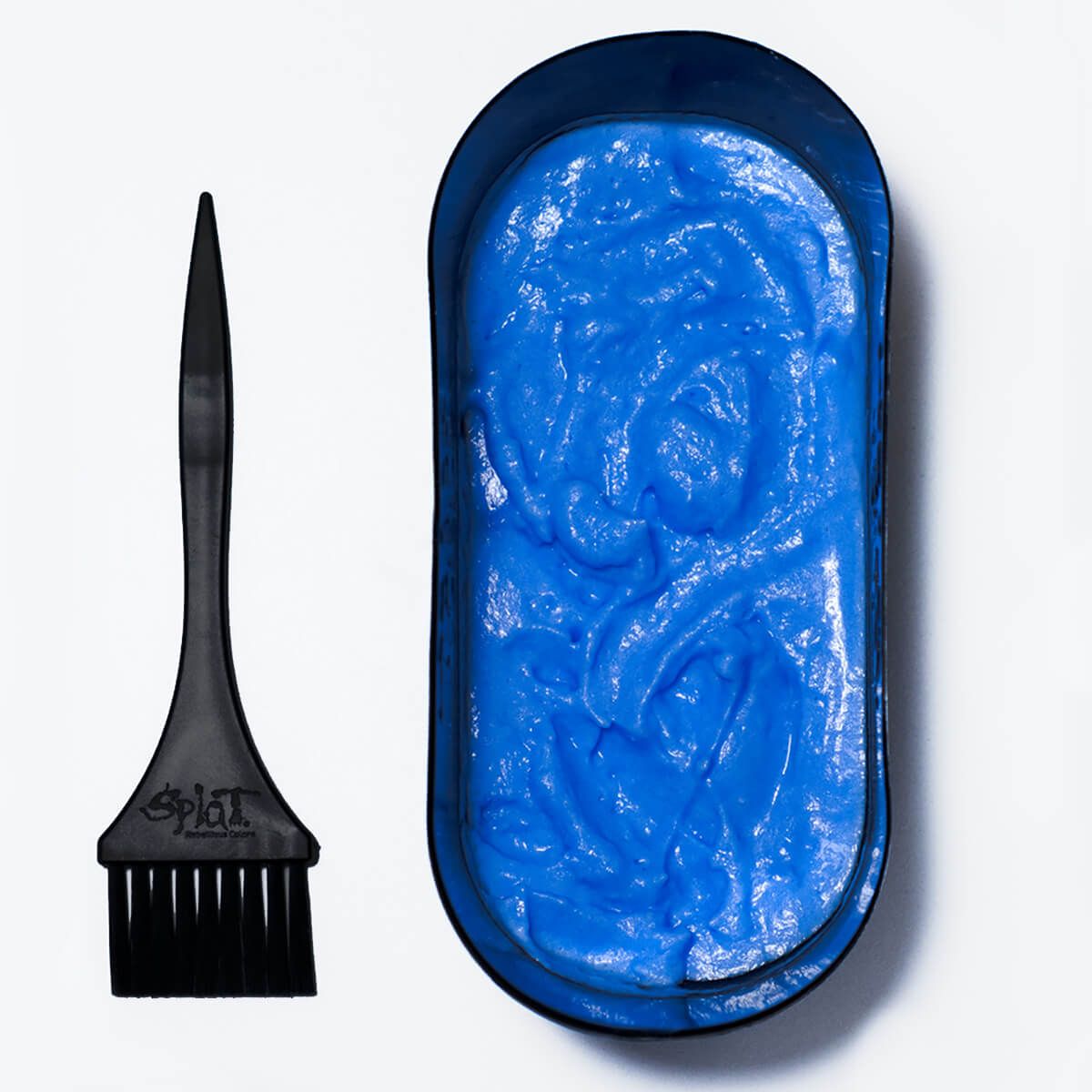How To Wash Out Bleach From Hair - Gentle Care After Lightening
When you lighten your hair with bleach, it's a big step, and knowing how to properly get the bleach out of your strands afterward is, quite simply, very important. Getting this part right helps your hair stay healthy and look its best, stopping things like dryness or damage from taking hold. You see, leaving bleach in for too long can really take a toll on your hair's overall well-being, making it feel rough or even a bit fragile. It's almost like giving your hair a fresh start, but then you need to make sure you're cleaning up properly so it can truly shine.
The whole idea of washing bleach from hair might seem a little bit much at first, but with a few good approaches, you can actually do it without any fuss. We're talking about making sure your hair feels soft and strong, not like straw, which, to be honest, is a common worry after any lightening process. This guide is here to walk you through each step, making sure you know exactly what to do to keep your hair happy and vibrant.
Whether you've just lightened your whole head or tried a little bleach wash to change up a color, the way you rinse and clean your hair right after makes a world of difference. It's about setting your hair up for success, allowing it to recover and grow out in a good way, which, you know, is what everyone wants. So, let's look at how to wash out bleach from hair and keep it feeling great.
- What Time Trump Speaking
- Lynn Murder
- Brian Kohberger Mugshot
- Off Campus Series Books
- I Love You Too In French
Table of Contents
- Why is Washing Bleach From Hair So Important?
- Preparing Your Hair to Wash Out Bleach
- What Kind of Shampoo to Use After Bleaching Hair?
- After the Wash - Next Steps for Bleached Hair
- Should You Trim Hair to Remove Bleach Damage?
- General Care Tips for Hair After Bleaching
- How Long Should a Bleach Wash Stay on Hair?
- Understanding Bleach Washes and Soap Caps
Why is Washing Bleach From Hair So Important?
You might wonder, why bother so much with washing bleach from hair? Well, the stuff used to lighten your hair works by changing its color, often by quite a few shades. This process, while it gives you that lighter look, can actually make your hair lose some of its natural strength and wholeness. It's almost like it's been through a lot, which can then make it more likely to break apart. That's why getting all the bleach out is a truly big deal for keeping your hair feeling good and looking healthy.
If bleach hangs around in your hair for too long, it can be pretty harsh. It can cause a lot of harm, making your hair feel rough and brittle once it's dry. This is because the bleach interacts with the hair strands in a way that can strip them of their natural moisture and oils. So, to keep your hair from becoming like straw, or to put it simply, to keep it from getting too dried out, it's really important to make sure every bit of that bleach is rinsed away completely. This helps to stop any more harm from happening and lets your hair begin its path to recovery.
Preparing Your Hair to Wash Out Bleach
The first thing you need to do when you're ready to wash bleach from hair is to give it a good rinse with water that's just a little bit warm. This initial rinse is pretty important, actually. You see, using water that's too hot can actually react with the bleach still in your hair, and that can make your hair feel very dry and fragile once it's all dried out. Hot water also has a way of opening up the tiny openings on your head's skin, which, to be honest, might already be feeling a little bothered by the bleach.
- Luke Newton Jimmy Fallon
- Nelly Furtado Boobs
- Jinx Love Interest
- Pope Francis Stepping Down
- Charles Michael Davis Children
So, to start, you'll want to rinse your hair really well with that lukewarm water. This helps to gently loosen up the bleach and get the first layer of it out without causing any extra bother to your hair or your head. It’s a bit like preparing the ground before you plant something; you want to make sure it’s just right. This step is a gentle introduction to the cleaning process, making sure your hair is ready for what comes next in getting that bleach out.
What Kind of Shampoo to Use After Bleaching Hair?
After that first good rinse with lukewarm water, the next step in how to wash out bleach from hair involves picking the right kind of cleanser. You'll want to use a gentle shampoo to get rid of any last bit of bleach from your hair and the skin on your head. This is pretty important because bleach can be quite strong on your hair, and letting it sit there for too long can really cause problems.
For that first wash after you've lightened your hair, choosing a clarifying shampoo is a really good idea. This special kind of shampoo is really good at taking away any leftover bleach and any other product buildup that might have gathered on your hair. It’s designed to effectively get rid of anything that shouldn’t be there, leaving your hair feeling cleaner. This type of shampoo also helps to remove things like hairspray or other styling products that might be clinging to your hair.
Some people, like me, actually, just use their regular shampoo to wash out bleach. I typically wash, then use a hair conditioner, then wash again, and then follow up with a deep conditioning treatment. The main thing is to make sure you're really getting all of that bleach out with whatever shampoo you pick, making sure your hair feels clean and ready for the next steps.
After the Wash - Next Steps for Bleached Hair
Once you've rinsed and shampooed to wash bleach from hair, there are a few more steps you can take to make sure your hair is getting the care it needs. If you're using a toner to adjust your hair color, you should put that on after the wash, typically when your hair is towel-dried. For instance, if you're using something like Wella, a 10 volume developer is usually all you need for that. This helps to get rid of any unwanted yellow tones that might show up after bleaching.
Following up with a deep conditioner is also a really good idea. Bleaching can make the outer layer of your hair, a bit like tiny scales, stand up, and this can make your hair get tangled much more easily. A deep conditioner helps to smooth these scales back down, making your hair feel softer and easier to manage. It's almost like giving your hair a big drink of water after it's been thirsty.
If your hair color isn't quite what you were hoping for, especially if it looks a bit yellow after bleaching, a purple shampoo can be a really good and safe choice to keep using. This kind of shampoo has purple pigments that help to cancel out those yellow tones, making your hair look more like the color you were going for. It's a pretty useful trick, you know, for keeping your hair looking its best after a lightening process.
Should You Trim Hair to Remove Bleach Damage?
Sometimes, even with the best care, the hair can get quite a bit of damage from lightening. Experts often suggest that, sometimes, the best way to deal with very damaged or fragile hair after lightening is simply to cut it off. This is actually a pretty straightforward way to get rid of the parts that are too far gone and to help your hair grow back in a healthier way. It's almost like starting fresh with a clean slate for your hair's ends.
Bleaching can, you know, really take away your hair's natural strength and how complete it feels, making it more likely to break. So, if your hair is feeling really rough and brittle, taking off the damaged parts can actually promote new, healthy growth. It’s a bit of a tough decision for some, but it can make a big difference in the long run for the overall well-being of your hair.
General Care Tips for Hair After Bleaching
Beyond the immediate washing to get bleach from hair, there are some general things you can do to keep your hair in good shape. Using deep conditioning treatments and hair masks that give your hair lots of good stuff is a really smart move to keep your hair healthy while it's recovering. These treatments help to put moisture and strength back into your hair, which it really needs after being lightened.
Another thing to remember is to try and use hot styling tools, like straighteners or curling irons, as little as possible. If you absolutely have to use them, always put on protective products first. This helps to stop any more harm from happening to your hair, which is already a bit more sensitive after being bleached. It’s about being kind to your hair, really.
You should also try not to wash your hair more than you need to. Washing too often can strip your hair of its natural oils, and these oils are pretty important for keeping your hair from getting too dry. Since lightening already has its own set of effects that can be a bit harsh, washing your hair too often can just add to those problems. It's almost like your hair needs a break to produce its own natural goodness.
This may also help your hair grow out more simply and quickly. When your hair is well-cared for, it tends to be happier and can grow without as much trouble. So, letting your hair rest a bit between washes and giving it those nourishing treatments can really make a difference in its overall health and how it grows over time.
How Long Should a Bleach Wash Stay on Hair?
If you're doing a bleach wash, which is a bit different from a full bleach, you should let it stay on your hair for about 10 to a maximum of 20 minutes. It's really important to keep checking the color from time to time. This way, you can stop your hair from getting an orange tint or becoming too light, which, you know, can happen pretty quickly. After that time, you'll need to rinse your hair really well.
Your natural hair actually soaks up the shampoo better than hair that's been dyed. So, when you're doing a bleach wash, keeping an eye on the clock and the color is key to getting the look you want without going too far. It’s a delicate balance, really, between getting the lift you want and keeping your hair in good shape.
Understanding Bleach Washes and Soap Caps
You can also use a bleach wash to make your hair lighter, much like you would with a full bleach, but it’s a bit gentler. These are sometimes called "soap caps," and they help to lift up old color or box color by one to two levels. We mix the shampoo with bleach and warm water for this. It’s a diluted mixture that's put on damp hair strands. This approach is great for people who want to get rid of unwanted color, make their hair color more even, or just brighten their hair a bit while trying to keep harm to a minimum.
For the mix, you'd typically use a ratio of 1:2:3. That means one part bleach powder, two parts developer, and three parts shampoo. This specific mix helps to make the bleach less strong, so it’s not as harsh on your hair as a full-strength bleach. It's a way to get a subtle change without going all in, which, you know, can be really helpful for color adjustments.
However, if you're hoping to change your hair from black to blonde using a bleach wash, you're probably not going to be able to do that. Or, at the very least, it would take many times of doing it. Bleach washes are more for slight lightening or correcting color, not for big changes. So, it’s good to have a clear idea of what this method can actually do for your hair.
So, to quickly go over what we've talked about: washing bleach from hair is a truly important step for keeping your hair feeling good and stopping harm. Start with lukewarm water, then use a gentle or clarifying shampoo to get rid of any last bits of bleach. Follow up with a toner if you need one, and always use a deep conditioner to help your hair recover. Remember that sometimes, if the harm is too much, trimming your hair can be the best path. Keep your hair healthy by using deep conditioning, trying not to use too much heat, and washing your hair less often. If you're doing a bleach wash, make sure to watch the time and the color closely, and know that these are for lighter changes, not big ones.

How to Wash Bleach Out of Hair: Ultimate Guide

How to Wash Bleach Out of Hair: Ultimate Guide

Brilliant Bleach Kit - Hair Bleach – Splat Hair Color